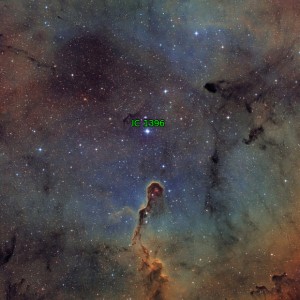Tentatively, we’re hoping to hold this on 23 May from 10:00-1:00, in a meeting room at the Loudoun County Public Library on Hay Road in Ashburn, VA. This is of course the Saturday of Memorial Day weekend, but given availability of meeting space, it was the first option we’ve been able to find for a while that doesn’t conflict with Astronomy Day on the 16th, so we’re going to go ahead and scheduling it.
There’s not typically a really structured agenda; an important part of this is informal discussion. As a starting point for this session, however, Beth will be talking about solar imaging and processing techniques that she’s used for images she has sent out over the past few weeks to this list. Kevin Quin also may do an imaging processing walkthrough with PixInsight, unless another member has some imaging data they’d like to try and do a processing walkthrough with.
We’ve had a few of our past attendees indicate that they can make it, but newcomers are always welcome as well. This is really a low-intensity group; our aim is to make it really painless to join or contribute. If you have some astrophotography data you want some help processing, or something you’d like to show, or an imaging question you’d like to discuss, feel free to bring it up at the meeting–that’s what this is all about.
Note that this is a change from a date (Aug 29) some of us had discussed a while back. Apologies to anyone who wasn’t included in the rescheduling discussion. I was still posting to the listserv from my Yahoo address then, and most things weren’t getting through.
For the same reasons, I’m reposting a message below about a few galaxy images I processed recently:
I finally starting to get a stable processing routine in PixInsight for my LRGB images, and have managed to get through a bunch of galaxies that I shot since last fall. These were all taken from my little backyard dog-servatory in Dunn Loring, between Tysons Corner and the Mosaic District, so you know there’s plenty of light pollution. The springtime galaxy images really suffered from this, as transparency was lower then and the soggy air reflected more light back down into the scope. Seeing was also much better for the one image shot in the fall (NGC 891), so details are sharper in that image. FWHM (a measure of sharpness of the stars in the image) was 1.95 arcsecs for that one, vs. 2.7 for the three shot in the spring.
The Quadrantids meteor shower can yield as many as 40 meteors per hour, radiating from the constellation Bootes. Visibility will be reduced on account of a bright second quarter Moon, but you may be able to spot a few during the night… Begin the new year by looking up!
Jupiter is sure to delight all who view it, from professional observatories to amateurs with handheld binoculars. Make sure to check out its four Galilean moons and see if you can make out colorful cloud bands or the Great Red Spot. If you’ve ever considered dabbling in planetary imaging, tonight (adjacent to a dark new moon) would be the perfect night to start!
Smack dab on the new moon, this promises to be nice dark viewing. These shooting stars are composed of the remnants of Comet Halley. Meteors—up to 30 per hour in the Northern Hemisphere and 60 per hour in the Southern—will appear to radiate from Aquarius.
The Quadrantids meteor shower can yield as many as 40 meteors per hour, radiating from the constellation Bootes. It peaks this year on the night of the 3rd and morning of the 4th. The first quarter moon will set shortly after midnight leaving fairly dark skies for what could be a good show. Best viewing will be from a dark location after midnight. Begin the new year by looking up!
The Leonids is an average shower, producing up to 15 meteors per hour at its peak. This shower is unique in that it has a cyclonic peak about every 33 years where hundreds of meteors per hour can be seen. That last of these occurred in 2001. The Leonids is produced by dust grains left behind by comet Tempel-Tuttle, which was discovered in 1865. The shower runs annually from November 6-30. It peaks this year on the night of the 17th and morning of the 18th. The nearly new moon will not be a problem this year. Skies should be dark enough for what should be good show. Best viewing will be from a dark location after midnight. Meteors will radiate from the constellation Leo, but can appear anywhere in the sky.
The Quadrantids meteor shower can yield as many as 40 meteors per hour, radiating from the constellation Bootes. It peaks this year on the night of the 3rd and morning of the 4th. Bummer though: this will occur during a nearly full moon, so all but the brightest meteors will be washed out. Still, looking up at the sky isn’t a bad way to start the new year!


